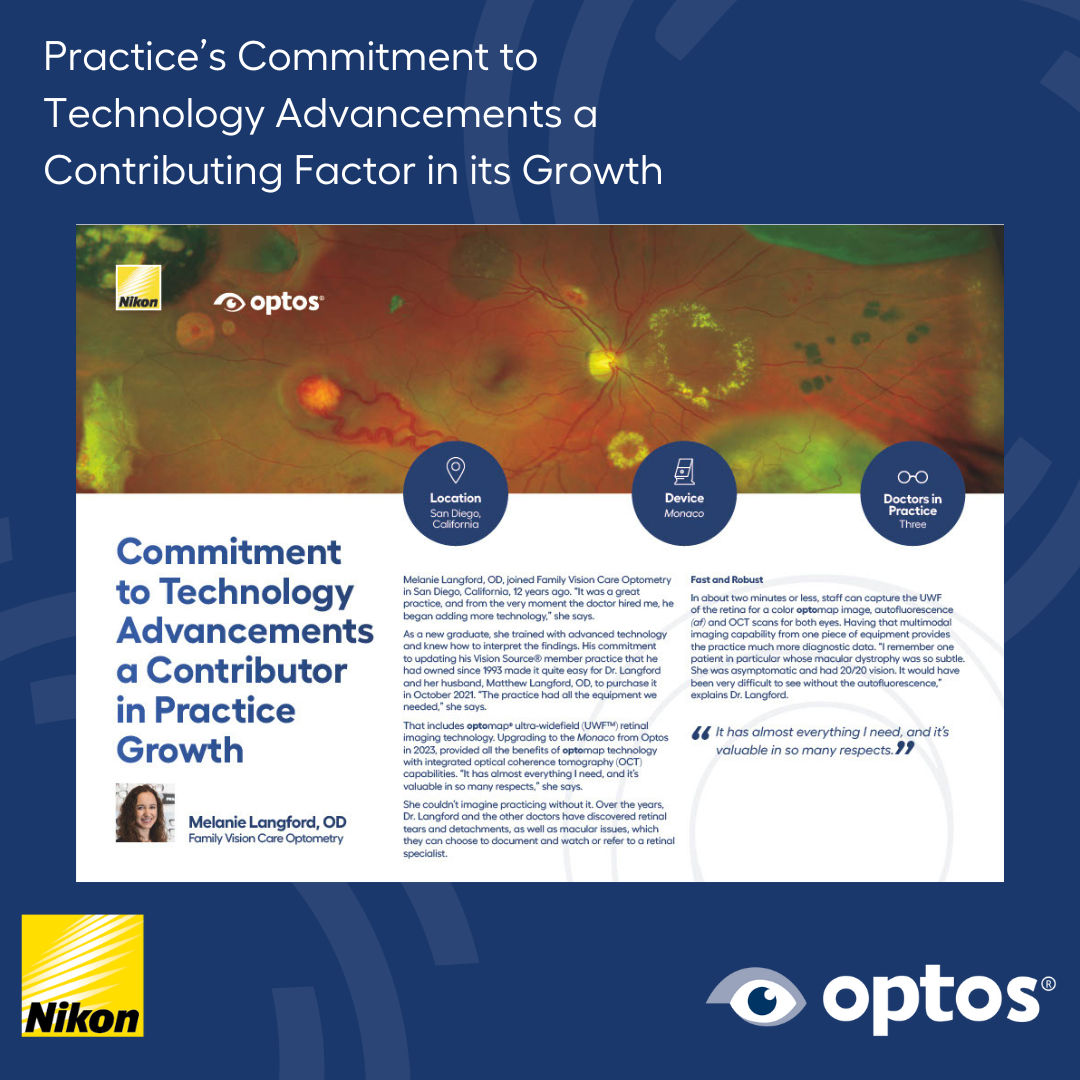Melanie Langford, OD, and her husband Matthew Langford, OD, purchased their Vision Source® member practice, Family Vision Care Optometry in San Diego, California, in October 2021. “It was a great practice, and from the very moment the doctor hired me, he began adding more technology, including optomap ultra-widefield retinal imaging technology,” she said.
Optos prides itself on being an industry leader that supplies eye care professionals with devices that offer an updated approach to eye care exams. Optos core products deliver high resolution optomap images of 82% or 200 of the retina. The process is patient-friendly and ultimately painless.
Last year, Langford upgraded to the Optos Monaco, which also features integrated optical coherence tomography (OCT) capabilities. Multimodal imaging capabilities from one piece of equipment allows for more diagnostic data and the capabilities of a more thorough ocular examination.
“It has almost everything I need, and it’s valuable in so many respects,” she shared. In just minutes, users can capture the ultra-widefield image, from the center pole to the periphery of the retina, for a color optomap image, autofluorescence (af) and OCT scans for both eyes.
More than 90% of her patients are screened using the Optos Monaco, which has helped discover ocular conditions including macular issues, and retinal tears and detachments in their patients that would have gone undetected. “Dr. Langford recalled, “I remember one patient in particular whose macular dystrophy was so subtle. She was asymptomatic and had 20/20 vision. It would have been very difficult to see without the autofluorescence.”
Because findings on an optomap are a frequent occurrence, Dr. Langford reviews her findings before she enters the exam room. This data review helps determine the time that will need to be allotted for the remainder of the patient’s visit. “I may open the image and see cataracts and that may impact how much time I’ll need to spend on a refraction. I don’t want to show my surprise to the patient if there’s a retinal tear so, I really try to look over those images first,” she explained.
With OptosAdvance software, practitioners can annotate images, noting any spots that should be reviewed year-over-year. If there is a negative finding, the images can quickly be shared with a retinal specialist for proper treatment planning if needed. The software is user-friendly and integrates into most healthcare offices.
Langford’s team works alongside retina specialists who also use Optos devices within their practices. She shared, “I know them well enough that I can text them or send them a photo of what I’m seeing. They respect that I have that technology, too, and have captured an image that helps them coordinate that patient’s care.”
When patients are shown their optomap images, they see the bigger picture of their ocular health. Being able to see their retinas and view a diagnosis on screen, the images become educational tools that work to build a patient’s trust and loyalty.
Langford said, “Having three full-time doctors is a reason why we’ve grown. Having the technology that helps them with their clinical decision making and demonstrates their commitment to patients is also beneficial. Patients trust us to have the products and technologies that can help them. They see that we want to keep up with the current technology and have the best equipment we can to diagnose and take care of them,” she added.
With more than 25,000 devices installed, Optos aims to set the standard for eye examinations that deliver the best care for patients. With nine imaging modalities across all devices, Optos technology offers bigger images in less time to improve clinic workflows. If you would like to upgrade your approach to eyecare, see how Optos can be a part of your business strategy, visit our website to schedule your free demo to see the difference for yourself.
